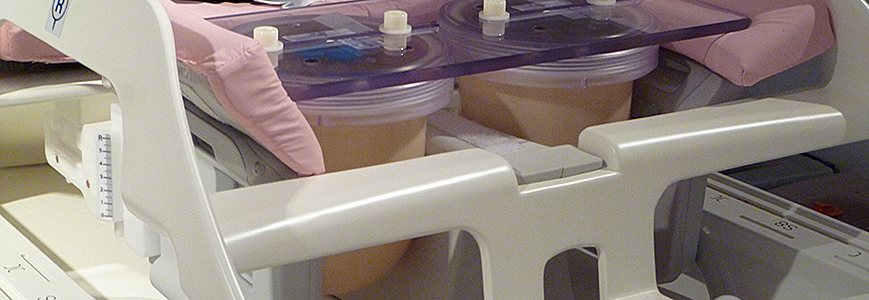Breast Phantoms - Not an Illusion

Accuracy = true, correct, exact ... but also, peace of mind.
Traditionally, mammograms are made with x-rays. But for women at high risk of breast cancer, doctors frequently call for magnetic resonance imaging (MRI).
That technology produces very detailed images. But how accurate are they? That is, how precisely can they detect the differences between various kinds of soft-tissue formations? It’s hard to know for sure because there are no universal standards for evaluating MRI systems' performance, and no accepted method for calibration.
As a result, it is both difficult and potentially misleading to compare images of the same patient taken on two different systems, or images taken on the same system over a span of months. Ideally, all MRI systems should be calibrated against a single standard.
PML scientists have worked for years on that problem, and recently partnered with a Colorado company to produce the first commercially available breast surrogates (called “phantoms”). Actually, there are two phantoms: one for overall imaging calibration, and a second that can test how well the MRI scan can track water flow in tissues in real time.
A breast phantom poses a unique set of challenges because the contents have to correctly and reliably mimic distributions of fat as well as both fibrous and glandular tissue. Moreover, the phantom’s chemical contents cannot change over time if it is serve as a standard, and it has to be shaped to fit into conventional breast imaging coils.
The first production run of phantoms is now in use by both U.S. and foreign customers, and they are employed in a large, multi-site clinical trial. Further improvements in the design are expected soon. Before long, they may be used in your local clinic.
Contacts
-
PML webmaster

